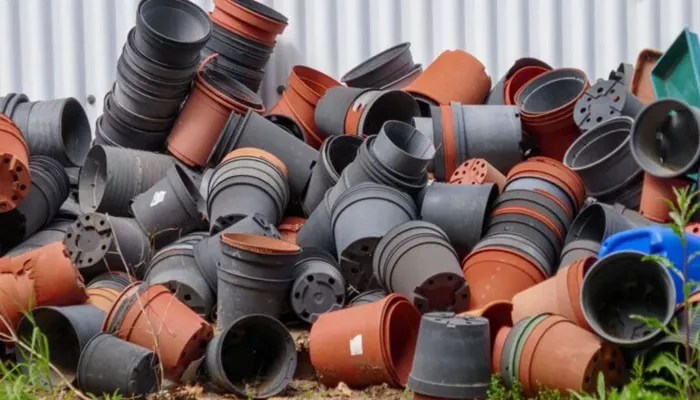As gardeners, we often find ourselves surrounded by old plastic pots that accumulate in sheds and storage areas. While many of us reuse these containers until they degrade, the issue remains: plastic pots are ubiquitous in the horticulture industry, but they’re not recyclable. According to the USDA’s 2019 census, nearly 242 million plants are sold in plastic containers each year, making plastic pots a significant contributor to landfill waste.
Historically, plants were sold in more sustainable options such as terra-cotta pots, bare-root, or ball-and-burlap. While clay pots are reusable, they are fragile and impractical for large-scale production. As plastic pots became more common for economic reasons, they also became a major environmental challenge.
To combat this, the Association of Professional Landscape Designers has launched the “Healthy Pots, Healthy Planet” initiative to encourage awareness and explore sustainable alternatives. But what can we as gardeners do to reduce plastic waste?
There are three primary strategies:
Opt for Alternative Pots: Alternatives to plastic pots include compostable containers made from materials like rice hulls, peat, cow manure, wood pulp, and coconut coir. These biodegradable pots break down in the soil, allowing roots to grow through the walls. However, it’s important to avoid peat-based pots, as peat harvesting is unsustainable.
Reuse and Repurpose: Reusing pots is an excellent strategy. While they may degrade over time, sturdy pots can be used year after year. Larger pots, such as those used for trees and shrubs, can serve multiple functions in the garden. If you have an excess, consider donating them to schools or community gardens where they can be put to good use.
Dedicated Recycling: While most plastic pots are not recyclable, setting up a dedicated recycling stream can help. Some communities offer plastic pot recycling programs, so check with local facilities to see if they accept garden containers.
Ultimately, no single solution will fully eliminate plastic waste from gardening, but by exploring alternatives and finding ways to reuse or recycle pots, we can collectively make a difference. If you have unwanted pots, reach out to schools or local gardeners—they might be able to use them, especially for educational purposes. By taking these small steps, gardeners can contribute to reducing landfill waste and fostering a healthier planet.


